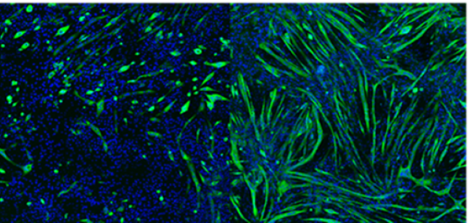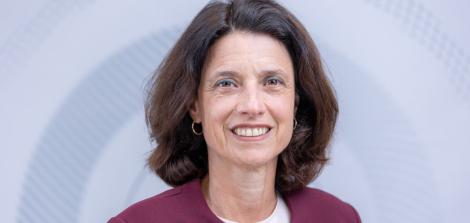"Personalized brain surgeries are not a thing of the future, they are already here," an interview with Dr. Yaara Erez

Imagine a world in which brain surgeries are performed using advanced imaging methods that allow surgeons to identify not only anatomical structures in the brain, but to also map each patient’s various brain functions in real time. In such a world, brain surgeries are personalized and allow patients to choose and receive treatment tailored to their needs and desires.
For Dr. Yaara Erez, this world is not a futuristic utopian vision, but rather the present reality. As part of her nearly decade-long research of brain functions at the University of Cambridge, she led a groundbreaking multidisciplinary research project as part of a prestigious fellowship program by the Royal Society, one of the UK's leading funding bodies. This research is part of the promising field of developing technologies for personalized brain surgery.
Dr. Erez has long since returned to Israel and to the Faculty of Engineering at Bar-Ilan University, where she serves as a senior lecturer and heads the neural processing and brain networks laboratory for advanced brain research. Dr. Erez has published numerous studies and articles that helped uncover unknown aspects of brain functions, and in the coming years she hopes to answer some of the most pressing questions in the field of brain research, while continuing to lead various developments in the field of personalized brain surgery.
Dr. Erez's laboratory employs a team of researchers from multiple disciplines such as neuroscience, physics, computer sciences, engineering and cognition, who investigate various aspects of brain activities – in health and illness.
We had a conversation with Dr. Erez about her research, her personal journey, the big scientific questions (and several “small” human questions), and her predictions for the future of personalized medicine.
Yaara, what makes the human brain such a wonderful and complicated organ, perhaps more than any other organ in the body?
“Our brain has different areas, both structurally and in terms of the functions they are involved in. These areas form networks, namely regions that work together and communicate with each other. We used to think that each area does something individually, but now we know that it doesn't – and we explore the way these networks are organized. We try to understand how the brain works, both in healthy and in ill individuals, in different clinical populations. We specifically try to understand how each individual’s brain is organized, which is also the intersection with personalized medicine. For many years, research revolved around understanding how the brain works in people on average, for example by “mapping” average brain activities for a particular function. But just as there are differences between people’s appearance, such as our height and other characteristics, there are also differences between people’s brains.”
Isn't the structure of the brain the same in all people?
“There are similarities in the way the brain is generally structured and organized, but there are differences when it comes to structural and functional aspects, so it is very important to understand how each individual’s brain is organized. This is especially critical for personalized medical treatments for patients. There are many systems in the brain that are related to various functions – vision, learning, memory, and motor skills- and we focus on brain systems that are related to attention and management. Management functions include a variety of cognitive processes such as attention, problem-solving, drawing conclusions, forward planning, etc. These are elementss that are essential for our daily functioning.”
Personalized brain surgeries
Typically, when we talk about personalized medicine, we refer to drug matching or diagnostics, but your focus is on personalized brain surgery. What is this really?
“We work with patients who have brain tumors and we always face a dilemma. On the one hand, it is important to remove as much of the tumor as possible, and on the other hand, we want a person to have a good quality of life and to be able to return to full and normal functioning- go back to their work and live their life in the best possible way. In recent years, certain surgeries have begun to be performed while patients are fully awake and undergo a functional mapping procedure. During surgery, while the patient is awake, they are asked to perform various cognitive tasks while local electrical stimulation is used to identify areas that are critical to functioning. For example, the patient is asked to speak, and if electrical stimulation of a particular area causes a temporary interruption in speech, this means that surgical removal of this area may permanently impair this function and therefore it may be best to avoid removing this area. In fact, electrical stimulation makes it possible to identify areas that are essential for certain functions thereby preventing functional damage as a result of the surgery. Based on functional mapping, surgeons make decisions during the actual surgery on which areas to remove or not. In some cases, even if from an oncological perspective it would be better to remove a specific part, they come to a conclusion that better balances oncological and functional considerations.”
What is the challenge you are trying to address?
“This stimulation method is commonly used and is now the gold standard. At the same time, it also has disadvantages, and it is not always accurate, so there is plenty of room for improvement. To improve the process of functional mapping, we are developing tools to help surgeons make decisions using different imaging methods – both for preoperative planning and during surgery. The idea is to measure brain signals, to “listen” to brain activities while patients are performing a given task. For example, we want to provide surgeons with a map of activities in different areas of patients’ brains so they can accurately use electrical stimulation. We try to give far more accurate indications than the ones we have today, tailored to each patient’s brain functions, rather than an average generalized "functional map."
You mean these tools actually replace surgeons’ eyes, in a way?
"Precisely. In many cases their own eyes only allow a surgeon to see anatomical structures, what they do not see is the activities and functions of different areas. The reason we add a layer of imaging tools testing brain functions is due to the increasing recognition of the importance of preserving patients' quality of life. This field is still developing and there are multiple tools that can and should be designed to refine the process and render it clinically applicable. ”
What value does this have?
“This is also important for basic research, but also for patients - these developments are nothing less than critical; because at the end of the day, when a patient sits in front of me I want to offer them the optimal treatment for their individual needs. That's why it's important to have the right tools and to be able to understand how each person's brain is organized and how it functions, especially in the context of brain diseases.”
Other than brain surgery to remove tumors, is your research expected to influence other areas?
“This functional mapping approach during surgery is also integrated in the treatment of other diseases, such as epilepsy or cerebrovascular diseases, wherever possible given the patient's profile and if there is some concern over functional impairment that we want to avoid. Expanding and improving the toolkit available to surgeons will also result in wider use for other diseases. ”
A combination of multiple imaging methods
One of the characteristics that distinguish Dr. Erez's laboratory is the utilization of multiple imaging methods, which allows researchers to identify not only the patient’s brain structure, but also the areas responsible for each of the patient's particular brain activities.
Why is it necessary to combine several imaging methods?
"The classic research approach," says Dr. Erez, "was to focus on one method of measuring the brain and try to understand phenomena through that particular measurement method. There are lots of methods for measuring the structure and function of the brain, and each has its advantages and disadvantages. We combine data from different imaging methods, because each one of them measures something a little differently, and also provides information at different resolutions in terms of time and space. We want to use this combination to create a profile that is as accurate as possible. ”
Do you perform all the tests at once or rather refer the patient to a series of tests?
“We do a series of tests for each person to obtain a lot of information about them - big data. We perform these series of tests as well as a number of measurements over time – before and after the surgery - to also learn about the changes and plasticity – brain plasticity - of brain networks over time. The idea is to combine different imaging methods to obtain a much higher level of accuracy to better understand how these systems are organized in each individual.”
The availability of multiple imaging and testing methods leads to a huge abundance of data and information, either from individual patients or from aggregate databases that offer information from tens, hundreds and thousands of people... Yaara, how do you deal with such large amounts of information?
“To analyze these vast amounts of information, we use machine learning and artificial intelligence (AI) tools, advanced computational methods and advanced algorithms, and these systems help us identify brain activity patterns that we cannot identify in other ways. We use these methods in other studies as well. For example, in another study conducted in collaboration with Rambam Hospital and led by Roni Ramon-Gonen of the Bar-Ilan Business School, we work with patients whose brain was injured, for example in an accident, and examine whether it is possible to predict based on brain scans which patients will develop or not develop chronic headaches. We use artificial intelligence tools in this study as well. ”
From research to the clinic
When considering the influence or impact of scientific studies, sometimes there seems to be a gap between academic groundbreaking scientific discoveries and their actual application in the world of clinical practice and treatment. What do you think can be done to bridge this gap?
“Beyond the basic research we do, which I consider to be essential to our understanding of the mechanisms underlying various diseases, our intention is also to introduce the methods we develop in operating rooms and clinics. We work in collaboration with clinicians, we listen to the clinical problems that they deal with and that they consider to be of utmost importance, and we offer our research tools to develop solutions to these problems. There really is a gap – often these are separate communities, so it is important to us to work together. Our goal is to see our developments used in clinics, even if this occurs in small, gradual steps. For example, the first step could be the integration of our developments into existing medical systems in hospitals. ”
We saw a video about your work at Cambridge on BBC, and in that video you said you hoped that within 5 to 10 years you would be able to plan brain surgeries not only based on differences between brain profiles, but also according to each individual’s profession or occupation. In other words, people who need high-level physical functions and those who need cognitive functions will undergo different surgeries. Where does this assessment stand today? Is it still relevant?
“The idea is to expand the arsenal of functional tests to include different cognitive functions, so that the treatment can be tailored to people according to their lifestyle and their preferences. For example, one person may say, “If I can't move my hand, it's a disaster, but I don’t mind being a little less good at solving problems right now,” and another person may say, “If I have a slight injury in my hand, I can live with it, but to do my job, the most important thing to me it to be attentive.” So, the individual’s profession and lifestyle are the context in which we develop these tools. We want to have tests and tools that are as accurate as possible. It's a gradual process, and on a certain level it is already happening in various medical centers around the world. Patients are asked about the functions that are important to them, and are offered the options available to them depending on their clinical condition. In recent years, we have made great progress in terms of investigational findings, but the ability to translate this into the clinic is still limited and requires much more work. ”
Tell us a bit about your personal journey, what made this intersection between bioengineering, cognition and personalized medicine so interesting for you?
“I learned about the field of neuroscience in high school as part of my enrichment classes, and already then it fascinated me. When I started my undergraduate studies, there was no Bachelor’s Degree in the field of neuroscience in Israel, only advanced studies. I really liked programing and more realistic domains and was also very interested in the cognitive side of psychology, so I studied these two disciplines thinking that both were related to the brain in a way. Looking back, this gave me excellent tools to further explore the field of cognitive neuroscience at the same intersection where technology and engineering meet clinical and cognitive research, which is the focus of research in my laboratory.
After my bachelor's degree I worked in the industry as a software developer and then moved to brain research. From the beginning, it was very important to me to combine basic research with clinical research. My PhD revolved around understanding the mechanisms underlying treatment with deep brain stimulation for Parkinson's Disease, in order to improve the way such stimulation is used.”
From Tel Aviv University to Bar-Ilan University through Cambridge
After my PhD, I extended my research to include cognitive domains. After a short postdoctoral project in Israel at Tel Aviv University, I moved to Cambridge University in England. At first I focused more on basic research of systems related to attention and managerial functions but I also searched for channels that would enable me to link this work to clinical aspects. I later received a fellowship from the Royal Society at Cambridge, one of the most highly regarded funding bodies in the UK. This 5-year fellowship is intended for developing independent research and building a research team. As part of this, I initiated collaboration with the department of neurosurgery at the university hospital, which later extended to other departments at the University. That was where I started researching and monitoring brain functions during surgery by recording brain activities, something that had never been done.
Tell us a bit about this project.
I used the grant to put together a multidisciplinary research team to develop ways of combining different imaging methods, basic research and clinical research for patients with brain tumors, in particular during surgeries. This is a project that started out small and expanded as other researchers joined, and it became quite a success in terms of investigational findings. As part of this project we have already published 10 articles and the list is only getting longer.
So this project is still ongoing?
Yes, this collaboration is still ongoing. We have a very rich database that we are working on and intend to further develop. In addition, I am also leading this research project in other directions. I have recently received generous funding from the Applebaum Foundation to continue this research here in Israel in collaboration with Ichilov Hospital and we are just about to start working.
What brought you back from Cambridge to Bar-Ilan?
At some point thoughts about where we belonged outweighed everything else, and we made a decision as a family to return to Israel. There are two things I love about Bar-Ilan: the Faculty of Engineering has a neuro-engineering program that combines engineering with brain research, which suited me very well considering the type of research I wanted to do. The second thing was that I was very impressed with the people there, the human capital, and the work environment was pleasant and enjoyable.
Does the fact that you have worked in the high-tech industry and not only in academies affect your research and your approach to research?
I think it gave me an important perspective, and even today, even though I am completely devoted to my research, I still think that in order to take something from any research and bring it to the real world, you have to pass through the industry. I don't really see these as two separate worlds but rather worlds that need to work together so we can move forward.
Going forward – about the new research laboratory
In the past year and a half, Dr. Erez has focused on building her state-of-the-art laboratory – a team of experts from various disciplines investigating the human brain, uncovering not only its actual structure but also the activity of neural networks. They do this using advanced systems – multiple imaging methods and machine learning and computational methods for processing and analyzing their findings.
Is the multidisciplinary aspect part of your approach or is this imposed by the real world?
I think this is the future; I decided on a multidisciplinary approach because I thought this was the right way. I have a multidisciplinary background - computer sciences and psychology as my Bachelor’s degree, my PhD was in the field of neurobiology, then I extended my research to a more cognitive domain, which is a huge transition, really heaven and earth It is not a linear but rather an ever-changing journey, and I learned and developed with each part of that course. Doing that helped me acquire various tools, which are utilized in my laboratory along with other methods.
And how is this approach reflected in your laboratory?
I am putting together a multidisciplinary team because my vision is to employ people from different fields, such as neuroscience, physics, computer sciences, engineering, and cognition, so that each and every one of them will bring their own perspective to the table.
Where do you see the field of personalized brain surgery in 5 years?
The arsenal of available tests is constantly growing and progressing. Today there are systems, even commercial ones, that can accelerate the process, and we will see this progress in the coming years. Few laboratories in the world today work in this field, but I expect more research groups to join. It is a gradual process that will accelerate and will not end after 5 years. It is a little different from pharmacological treatment, it is not like there is going to be a new drug on the market all of a sudden. There will be a gradual change that will introduce more and more aspects into clinics and medical use.
Last Updated Date : 12/11/2024








